In previous articles and Slideshow Albums 1 and 2 (“Introduction” and “Artwork Bearing Signatures and Attributions…”), I reported that many art prints produced between 1900 and the 1930’s began as photos created in the Chicago studio of Beatrice Tonnesen.
Relatively few of these prints were signed by Tonnesen, but many unsigned examples of her work can be identified because:
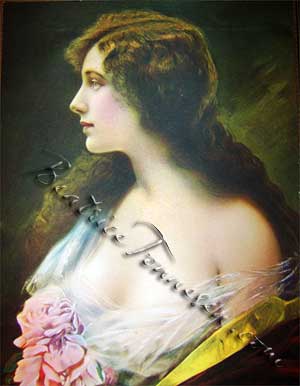 1. The images contain props and/or costumes known to have been used by the Tonnesen Studio. Once an item appears in a signed Tonnesen print, its presence in an unsigned print suggests the same point of origin. For example, the fancy footstool shown in Album 2 in Tonnesen’s signed print titled “Where Peace Abides,” is a frequent indicator of Tonnesen’s work. Tonnesen used her props over and over, favoring certain chairs, rugs and costumes that can usually be differentiated from those of other studios. One caveat: In some cases, artists or illustrators painted new backgrounds that were not in the original photo, retaining only the central figure from the original photograph. So those items added by the illustrators are their own creations rather than the photographer’s props. In most cases, this technique seems to have pertained to outdoor, non-studio settings. See the first two images in Album 1 where both exterior backgrounds were added by artists – the first, apparently, by Tonnesen herself and the second, very possibly, by R. A Fox. An example of a painted indoor setting is image 4 in Album 3, which can also be viewed close-up in the section titled “Zoomify an Image,” posted by Sumner. In the original photo by Tonnesen, the nursery decor was non-existent. Because Tonnesen signed the illustration, I assume it was she who added the background painting. Continue reading
1. The images contain props and/or costumes known to have been used by the Tonnesen Studio. Once an item appears in a signed Tonnesen print, its presence in an unsigned print suggests the same point of origin. For example, the fancy footstool shown in Album 2 in Tonnesen’s signed print titled “Where Peace Abides,” is a frequent indicator of Tonnesen’s work. Tonnesen used her props over and over, favoring certain chairs, rugs and costumes that can usually be differentiated from those of other studios. One caveat: In some cases, artists or illustrators painted new backgrounds that were not in the original photo, retaining only the central figure from the original photograph. So those items added by the illustrators are their own creations rather than the photographer’s props. In most cases, this technique seems to have pertained to outdoor, non-studio settings. See the first two images in Album 1 where both exterior backgrounds were added by artists – the first, apparently, by Tonnesen herself and the second, very possibly, by R. A Fox. An example of a painted indoor setting is image 4 in Album 3, which can also be viewed close-up in the section titled “Zoomify an Image,” posted by Sumner. In the original photo by Tonnesen, the nursery decor was non-existent. Because Tonnesen signed the illustration, I assume it was she who added the background painting. Continue reading
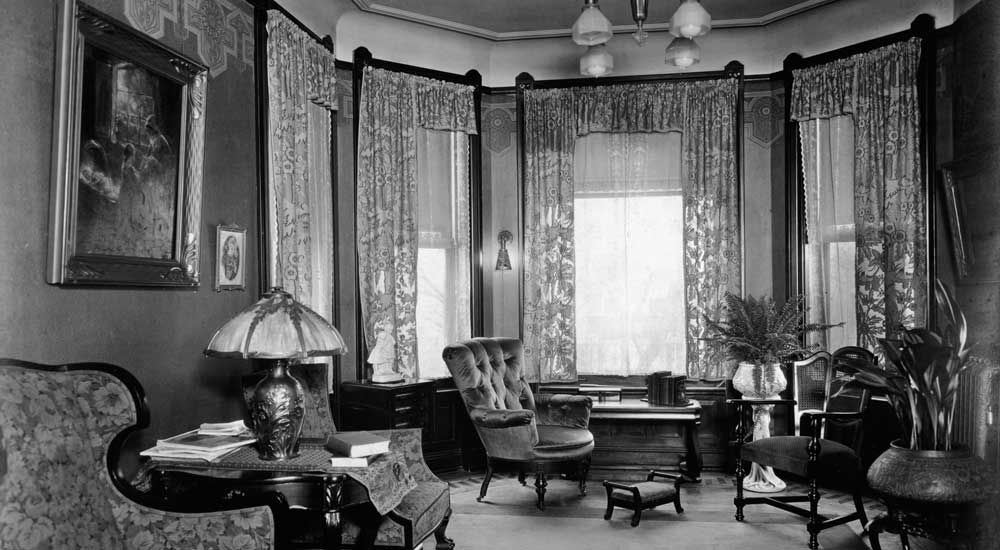

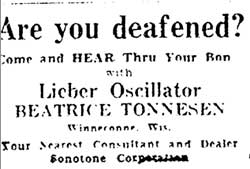
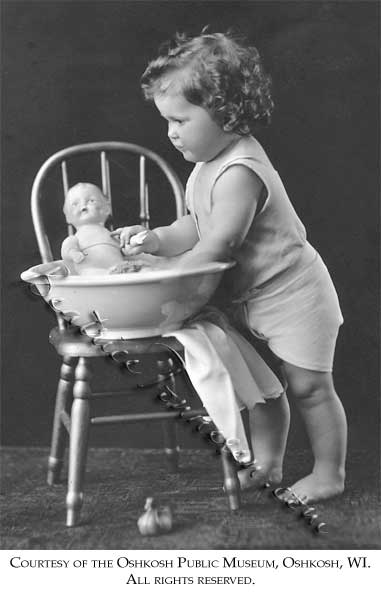
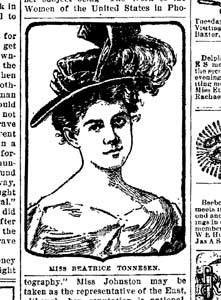 The work of American women in artistic photography has been represented at Paris by two delegates, both of whom are ably fitted by reason of talent and artistic achievement, to speak for the feminine exponents of the profession.
The work of American women in artistic photography has been represented at Paris by two delegates, both of whom are ably fitted by reason of talent and artistic achievement, to speak for the feminine exponents of the profession. At the website
At the website  I have found this copyright on a couple of the newspaper inserts. A Google search provided no additional information on the company. Not a particularly creative label, is it.
I have found this copyright on a couple of the newspaper inserts. A Google search provided no additional information on the company. Not a particularly creative label, is it.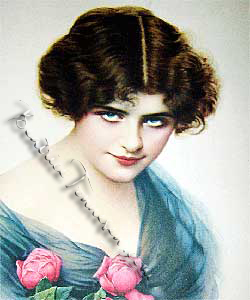 Beatrice Tonnesen has not generally been recognized as a major contributor to the so-called “Golden Age of Illustration,” that period in America from about 1900-1940, when calendar art was intensely popular. Artists such as the Hintermeisters, R. Atkinson Fox, Gene Pressler, Zula Kenyon, Arthur Elsley and others carved out lucrative careers by providing the publishers and calendar companies with appealing artwork for mass consumption.
Beatrice Tonnesen has not generally been recognized as a major contributor to the so-called “Golden Age of Illustration,” that period in America from about 1900-1940, when calendar art was intensely popular. Artists such as the Hintermeisters, R. Atkinson Fox, Gene Pressler, Zula Kenyon, Arthur Elsley and others carved out lucrative careers by providing the publishers and calendar companies with appealing artwork for mass consumption.